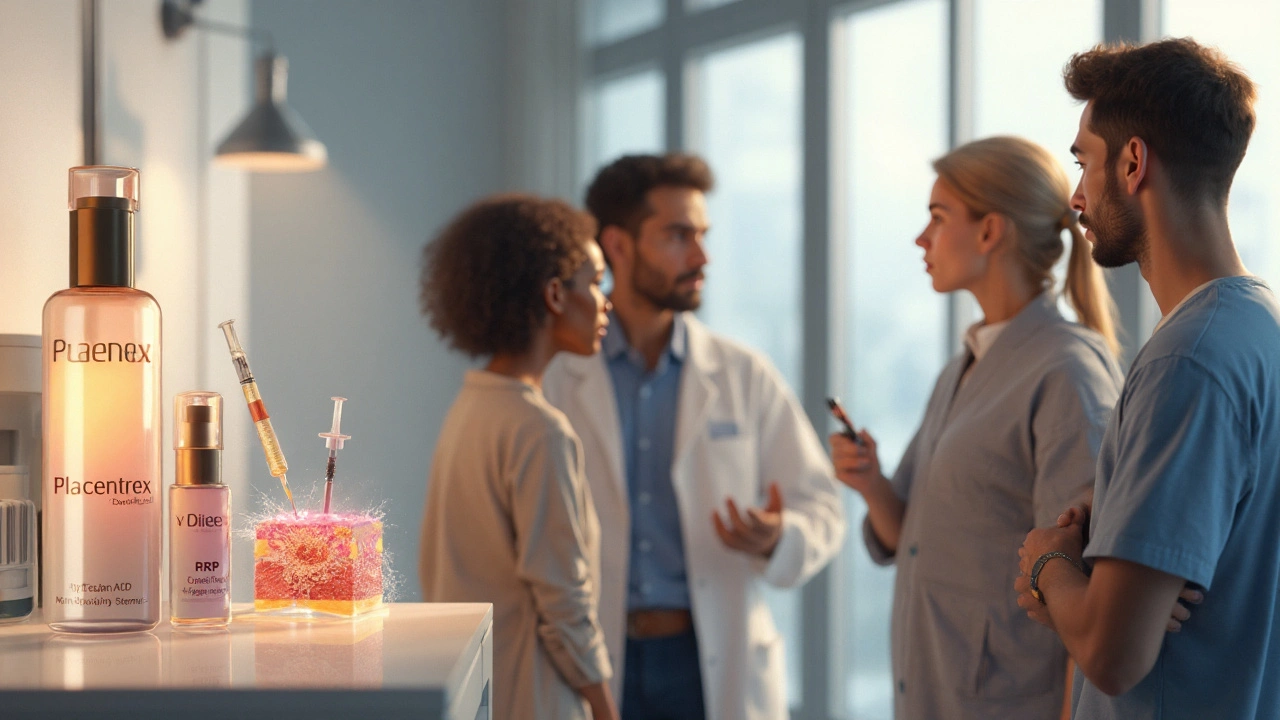Growth Factor Therapy Explained: Benefits, Risks, and Practical Tips
Ever wonder why some injuries heal faster than others? The secret often lies in tiny proteins called growth factors. They act like messengers, telling cells to grow, divide, or repair damaged tissue. In recent years doctors have started using these messengers as a treatment—what we call growth factor therapy. Below you’ll get the basics, see where it’s used, and learn what you should watch out for.
How Growth Factors Work
Think of a growth factor as a text message to your cells. When a wound occurs, the body releases specific proteins that bind to receptors on nearby cells. This binding triggers a chain reaction: cells start multiplying, new blood vessels form, and the damaged area fills in with fresh tissue. In therapy, doctors deliver these proteins directly, either as a gel, injection, or spray, to jump‑start the natural repair process.
Common Uses and What to Expect
Most patients see growth factor therapy in sports medicine, skin resurfacing, and chronic wound care. Athletes may get injections after a ligament tear to speed up return to play. Dermatologists use platelet‑rich plasma (PRP), which is basically a natural source of growth factors, to reduce wrinkles or promote hair growth. For diabetic foot ulcers, a topical gel containing specific factors can shrink healing time dramatically.
When you walk into a clinic, the doctor will first assess the injury and decide which growth factor fits best. Treatments usually involve a short series—one session per week for three to six weeks. You might feel a mild pinch during injection, but most people report only minor soreness afterward.
Cost can be a factor. Because these proteins are patented or require special preparation, a single session can run a few hundred dollars. Some insurance plans cover the procedure for chronic wounds, but elective uses like cosmetic skin work often aren’t covered.
Safety is a top priority. Since growth factors are naturally occurring, severe allergic reactions are rare. However, over‑stimulating tissue can lead to unwanted scar tissue or, in very rare cases, encourage tumor growth. That’s why a thorough medical history and proper dosing are essential.
If you’re considering the therapy, ask your provider about the source of the growth factors. Some clinics use the patient’s own blood (autologous PRP), which eliminates the risk of foreign proteins. Others use recombinant (lab‑made) versions, which are more consistent but may carry a higher cost.
After each session, give your body a chance to rest. Gentle movement, proper nutrition, and staying hydrated support the healing cascade. Most people notice improvement within a few weeks, but full results can take months, especially for deep tissue injuries.
Bottom line: growth factor therapy taps into the body’s own repair system, offering a targeted boost for healing. It’s not a magic bullet, but when combined with proper rehab and medical oversight, it can cut down recovery time and improve outcomes. Talk to a qualified professional to see if it’s right for your situation.
September 25, 2025
Alyssa Penford
11 Comments
Explore how Placentrex (human placental extract, nitrogen) stacks up against PRP, hyaluronic acid, stem cell therapy, and other wound‑healing options. Get a clear comparison, usage tips, and FAQs.





